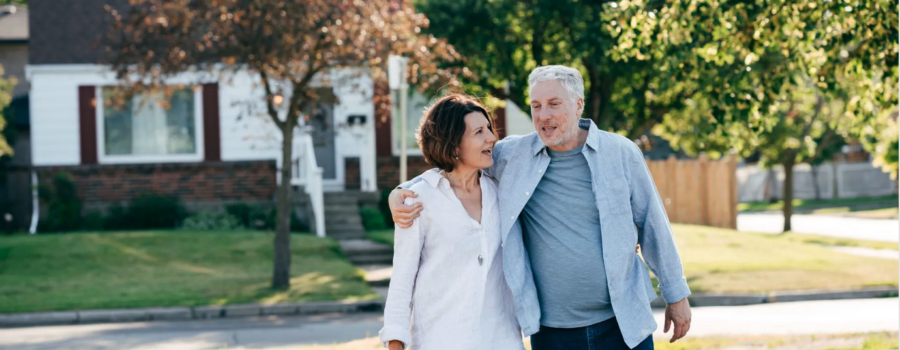Downsizing for retirement is all about cutting back and simplifying your life. Think less house to clean, fewer bills to pay, and more cash in your pocket from selling your bigger place. Downsizing offers significant financial benefits and lifestyle advantages so that you can focus on what will make you happy in your golden years.
Reduced Living Expenses
Transitioning from a larger family home to a smaller residence is a strategic financial decision that can free up cash flow and reduce the monthly financial pressures that come with maintaining a larger property. Transitioning to a smaller home can lead to substantial savings on utility bills, as reduced square footage decreases the cost of heating, cooling, and electricity. It can also result in lower property taxes and homeowners’ insurance rates, directly impacting annual expenses. The smaller the home, the less maintenance and repair it requires, saving money and reducing the physical and time demands on retirees.
Mortgage and Debt Freedom
Selling a larger home to move into a smaller one can often result in the outright purchase of the new property, especially if the previous home has accumulated substantial equity over the years. This move can eradicate monthly mortgage payments, freeing up significant amounts of income that were previously tied up. Downsizing also offers a strategic advantage in managing and reducing other forms of debt. The additional capital gained from selling a larger property can be wisely used to pay off existing debts, such as credit cards, car loans, or lines of credit. This debt reduction strategy decreases monthly outgoings and minimizes interest payments, contributing further to financial freedom.
Unlocked Equity
For many retirees, their home is their largest asset, and the equity built up over the years represents a substantial portion of their retirement savings. Downsizing allows homeowners to convert this dormant equity into liquid assets. The equity unlocked from downsizing can dramatically reduce financial stress by providing a cushion that supports a comfortable lifestyle. For retirees facing the prospect of a fixed income, this additional capital can ease worries about the adequacy of their retirement savings, covering living expenses, healthcare costs, or unexpected financial needs. This financial breathing room allows retirees to enjoy their golden years without the looming anxiety of financial constraints.
Strategic Investment Opportunities
The equity unlocked from selling a larger home presents a chance to diversify and strengthen one’s financial portfolio for the retirement years ahead. The lump sum from downsizing can be strategically allocated into stocks, bonds, mutual funds, and other investment vehicles, depending on one’s risk tolerance and time horizon. For those reluctant to give up their stake in real estate, Real Estate Investment Trusts (REITs) offer an attractive alternative. Investing in REITs allows retirees to remain involved in property markets without the direct responsibilities of ownership. Investing in Tax-Free Savings Accounts (TFSAs) or using the funds to max out Registered Retirement Savings Plan (RRSP) contributions can significantly reduce tax liabilities. Consulting with a financial advisor can help retirees navigate these decisions, ensuring that the transition not only secures their financial future but also enriches their retirement years.
Location Flexibility
Many retirees prioritize being close to healthcare facilities, shopping centers, and recreational amenities. Downsizing often makes it financially feasible to move to areas that offer convenient access to these essential services. Urban or suburban communities specifically designed for retirees can provide everything from medical services to leisure and cultural activities within easy reach. The decision to downsize also opens up possibilities to relocate to areas with a more affordable cost of living. Moving from high-cost urban areas to smaller towns or cities can significantly stretch retirement savings.
Simplified Living
Moving to a smaller home or a more manageable living space means there’s less to take care of on a day-to-day basis. The demands of cleaning, repairs, and general upkeep are minimized, freeing up physical energy and time that can be redirected toward more rewarding activities. For retirees, this reduction in maintenance tasks is a gateway to a stress-free lifestyle that prioritizes well-being and enjoyment over chores and responsibilities. A simplified living space also means a home more suited to their mobility needs. Downsizing often involves selecting homes with practical layouts, fewer stairs, and accessible features that can accommodate changing physical needs over time. This foresight ensures comfort and prolongs independence, making daily life more enjoyable and less encumbered by physical constraints.
More Time for the Things That Matter
With the burdens of a large home lifted, retirees find themselves with a wealth of time to explore new hobbies or rekindle old ones. Whether it’s gardening in a more manageable space, joining community clubs, taking up photography, or exploring the great outdoors, downsizing creates the space and opportunity for retirees to engage in activities that enhance their physical, mental, and emotional well-being. It also means more opportunities for social engagement and building meaningful relationships. Downsizing often brings retirees closer to community centers, clubs, and groups that share similar interests, facilitating social interactions and friendships and countering the isolation that some retirees face.
Downsizing helps create a retirement that is as rewarding and fulfilling as the years that led to it. With fewer household burdens and financial worries, retirees can be more spontaneous, taking trips, exploring new interests, and enjoying the moments that make retirement truly rewarding.
 Back to myNiagaraOnline
Back to myNiagaraOnline
































